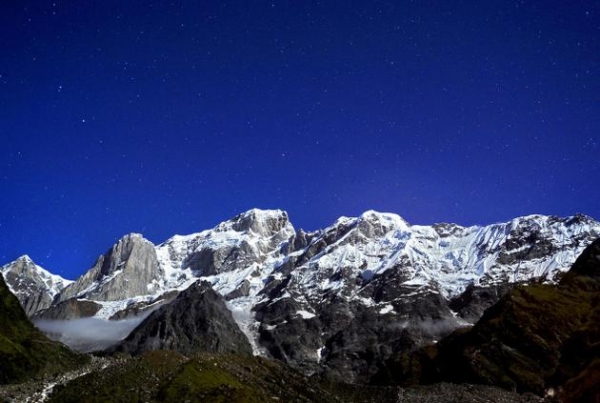On top of the world

Countries around the world celebrate International Mountain Day on December 11, in order to raise awareness on issues relating to mountains. Various activities such as book fairs, themed lectures, workshops, art contests and press events are organised on this day.
International Mountain Day has a particular theme each year. This year’s theme is “ Promoting Mountain Products” .
Our majestic mountains
A mountain is defined as “a natural elevation of the earth surface rising more or less abruptly from the surrounding level and attaining an altitude which, relatively to the adjacent elevation, is impressive or notable.” There are three main types of mountains: volcanic, fold, and block. All three types are formed from plate tectonics: when portions of the Earth’s crust move, crumple, and dive, forcing the surface rock upward, creating a landform higher than the surrounding features.
So what exactly makes these mountains so important that they have an entire day dedicated to them?
There is so much to be said about the world’s undeniably incredible mountains. These giants encompass some of the most spectacular landscapes, a wide variety of ecosystems, a great diversity of species, and distinctive human communities.
Mountains range from tropical rain forests to mountains permanently covered with ice and snow, from those that receive copious amounts of rainfall, to high altitude deserts.
Did you know that more than a quarter of the world’s surface is covered by mountains? Or that over 12 per cent of the human population (approximately 720 million people) call the mountains their home?
Mountains not only provide sustenance for mountain people around the world, but also indirectly benefit billions more living downstream. They are the water towers of the world, providing freshwater to at least half of the world’s people. Most of the world’s rivers are fed from mountain sources, with snow acting as a storage mechanism for downstream users.
They also play an important role in influencing regional and global climates and weather conditions.
All this essentially means that the well-being of people around the world depends largely on the health of our mountains.
Threats that mountains face
Mountains are vulnerable to a host of threats including landslides, avalanches, volcanic eruptions, fire, climate change, land cover change and agricultural intensification, deforestation, infrastructure development, and armed conflict. These pressures degrade mountain environments and affect the fragile ecosystem and the livelihoods of people dependent upon them. The impacts of unsuitable development are particularly intense and more rapid in mountains, and more difficult to correct than in other ecosystems.
Mountain people are among the poorest and most disadvantaged in the world, with about 80 per cent living in poverty. They often face marginalisation and lack access to basic services such as health and education. Traditional mountain societies rely on agriculture, with a higher risk of crop failure than at lower elevations because of harsh weather and less level ground suitable for agriculture. Moreover, since mountains are constantly under threat from disasters, the hardships they face are exacerbated.
Promoting mountain products, mineral mining supports some mountain societies, and tourism contributes to the economies of many mountain communities. There is growing evidence that many mountain regions have become increasingly disaster-prone over the past few decades, due to unchecked mining and unbridled development around tourist attractions. Sustainable approaches to development in mountain regions are therefore particularly important today.
If mountain producers can concentrate on high value, high quality mountain products such as coffee, tea, cocoa, honey, herbs, spices and handicrafts, there are opportunities for them to sell these products nationally, and even internationally.
Tourism-related services such as trekking, skiing, agricultural experiences, culinary tours and cultural heritage walks, which allow visitors to discover unique aspects of the mountain, can boost local economies, improving livelihoods. However, it is crucial that tourism is sustainably managed in order to prevent the degradation of fragile mountain ecosystems.
India is home to great, diverse mountain ranges, which include some of the tallest mountains in the world. These include the Himalayan range, the Karakoram range, the Western Ghats (Sahayadri Mountains), the Eastern Ghats, the Vindhyas, the Aravallis and the Patkai Hill Range. Since time immemorial, these mountains, which today face so many challenges, have been treated as sacred, and as places of worship.
On International Mountain Day, let us raise awareness about the conservation of mountains, and the sustainable use of scarce resources from mountain areas. Let us protect indigenous cultures, traditions and knowledge by using mountain products ourselves. Finally, let’s resolve to conserve mountain biological diversity, for the well-being of mountain dwellers and our own well-being.
John Muir, naturalist and conservationist said, “Thousands of tired, nerve-shaken, over-civilised people are beginning to find out that going to the mountains is going home; that wildness is a necessity.”
Celebrating this day
The International Year of Mountains was held in 2002, and was launched at the headquarters of the United Nations in New York on December 11, 2001. The leading agency was the Food and Agriculture Organization (FAO). The aim was to raise awareness and trigger action on issues relating to sustainable mountain development.
The UN designated December 11 as International Mountain Day, and encouraged the international community to organise events every year to highlight the importance of mountains. Each year has a particular theme. Previous themes have focused on freshwater, peace, biodiversity or climate change.
The symbol of International Mountain Day consists of three equilateral triangles that represent mountains. The triangles are inset with shapes: a blue diamond shape, representing ice or snow at the top of a mountain; an orange circle, representing resources that are mined from inside mountains, and a green triangle which represents the crops that grow on mountains.

Facebook comments